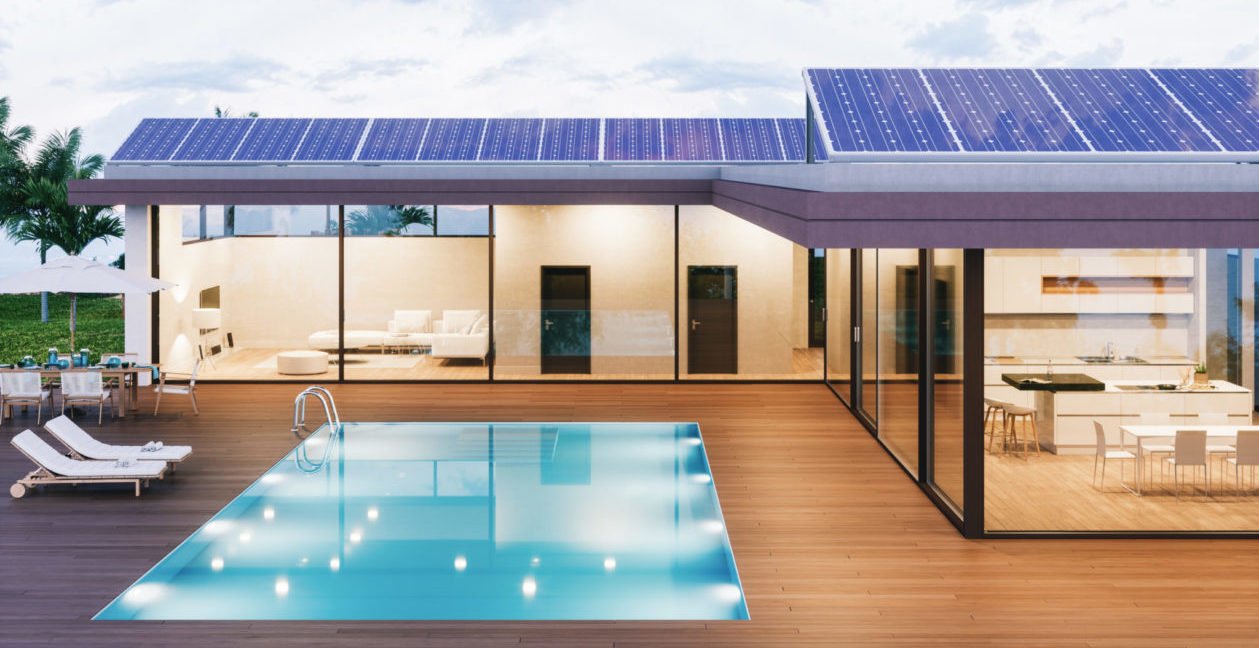So it’s 2020 and you are resolved to do an upgrade on your house. Or perhaps build a new one.
Everyone’s fantasy is different—you may want a whiz-bang kitchen, and your spouse may want a cozy library. I am not here to get in the middle of that. In fact, I wish you luck in working it out.
However, given technological innovations over the past few years, you should definitely explore the opportunity to build it green and healthy, be the coolest house in the neighborhood and reduce greenhouse gas emissions. Perhaps you can both agree on that.
Let’s start with your energy choices. Given the vagaries of increasingly extreme weather, the smart house is set up to be able to generate its own energy and be disconnected from the grid, if necessary. Solar is now easily installed and connected to the grid, but it generally will not produce all the energy you need. You also need batteries to store the energy when you have excess, to use when the sun is not out. Battery technology is getting better, though it still has a way to go. Solar does work, however. I have it on my Brooklyn roof, and I no longer pay for my electricity.

Geothermal, for some locales, is another great option. It uses a pump, underground pipes and a duct or radiators to bring heat from the earth into the house in the winter and take heat out of the house during the summer. It will reduce energy costs substantially, though initial costs are a bit more than a traditional HVAC system, and releases no greenhouse gases.
Building material is another area where your choices make a difference. A lot of your home will use wood, whether in the studs or in the cabinetry. You can opt for Forest Stewardship Council-certified timber, which ensures that the trees are harvested sustainably and that wildlife, workers and water sources are protected. There are beautiful tropical hardwood species beyond the traditional mahogany to explore, and FSC certification helps communities protect their forests through sustainable management. You can also ask for recycled wood.
If you use ceramic or glass tiles in bathrooms, kitchens or floors, specify recycled content, which will cut down on energy and waste. Kitchen countertops also come with recycled content, and alternatives include recycled glass slabs and tiles, paper composite, recycled aluminum and FSC-certified wood.

While we are on bathrooms and kitchens, ask for low flow toilets, faucets and showerheads. The technology is such these days that you can count on those appliances to do their job—especially the higher end versions—while using less water. And look for the highest Energy Star rating for your appliances.
Ask your contractors to use no VOC paints, stains or varnishes and nontoxic glues (and no formaldehyde in anything). You will be healthier for it.
Don’t scrimp on the windows—look for high energy efficiency ratings, double or triple glass, and you can get FSC-certified wood frames as well. Personally, I like wood on the inside and aluminum on the outside so it handles the weather better.
When choosing insulation, you will want to ask for nontoxic material (not fiberglass) and potentially, recycled material. You will want to make sure your house is well insulated, regardless. Safe and effective materials include wool, denim, cork and paper composite.
Like greenery? Why not put some on your roof? Green roofs can cool your home and handle storm runoff. Plus they look pretty. There are lots of myths about green roofs, but they are easier to install and maintain if you work with experienced professionals.
While we are on greenery, if you have or plan to have a garden, go native. You will find that native plants need less water, are more resilient to local weather and attract local birds and butterflies. This article gives you a link to determine which plants will intrigue which birds in your zip code.
Ideally, avoid lawns, but if you must have one, keep it small and with native grass. And avoid chemicals, which means more weeding, but with native plants chosen to interact symbiotically, you should not have much of a problem. There are plenty of native plant landscaping professionals to help you out.
Your architect, contractor, landscaper or interior designer may whine about having to research all this. They may claim they can’t find resources or that the projects will cost too much. In my experience, that’s because they have no experience, and it’s too much work and effort for them to find new sources and new relationships. So if they keep arguing, find firms who make it their business to know and understand green alternatives. There are many.
You can also request that your new house be built to LEED certification standards, which are focused on the health and sustainability of the home, promulgated by the U.S. Green Building Council. The USGBC has some useful tools and directories.
So, go greenbuild for your 2020 New Year’s resolution and get ahead of the Joneses. Soon they will be following your LEED.







